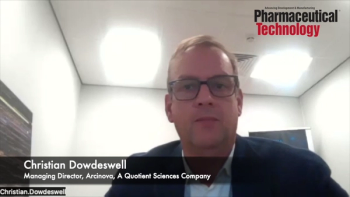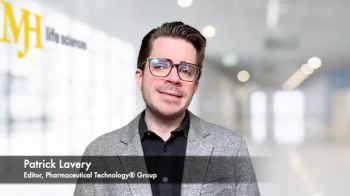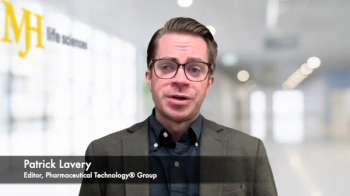
- Pharmaceutical Technology-02-01-2020
- Volume 2020 Supplement
- Issue 1
Sourcing Success in Cell and Gene Therapy Development
As cell and gene therapies become more prominent, industry is seeking the expertise and capabilities of outsourcing partners to ensure success.
As cell and gene therapies are garnering more interest within the biopharma industry, demand for adequate manufacturing capacity and talent to ensure success is increasing. To explore how outsourcing can prove beneficial for cell and gene therapy (CGT) development, Pharmaceutical Technology spoke with Miguel Forte, chief commercialization officer, ISCT, CEO of Bone Therapeutics, and former CEO of Zelluna Immunotherapy; Alengo Nyamay’antu, scientific communications manager, Polyplus-transfection; and Matthew Lakelin, vice-president business development and scientific affairs, TrakCel.
Key benefits
PharmTech: What are the key benefits of partnering with an outsourcing organization for the development of CGT?
Forte (Bone Therapeutics): Outsourcing is a key element of any biotech business and virtually a requirement to be able to expand and reach out to needed competencies and resource management. For any biotech, and in particular for CGT highly innovative processes, the use of outsourcing enables companies to take advantage of additional required competencies. Even though the ownership of intellectual property (IP), know-how and processes, and data should always remain with the CGT companies, the ability to use outsourced competencies, in a field where not enough talent is available, is a very important success factor. In addition, outsourcing enables organizations to manage their cash flow.
One example is manufacturing, where the use of contract development and manufacturing organizations (CDMOs) provides not only additional competencies but a de-risking of the investment. At early stages of still invalidated technologies or products, it may be of significant risk to establish large ‘in-house’ structures that carry significant cost associated with the risk. An outsourced investment enables the product developing companies to progress with the technology at reduced risk with cash flow management.
Nyamay’antu (Polyplus-transfection): CGT developers are booming and viral vector large-scale manufacturing is short of capacity. The majority of developers from small biotechs and even from Big Pharma rely on outsourcing partners, including contract manufacturing organizations (CMOs, CDMOs) with extensive experience to accelerate the journey of their drug product from bench to market. This choice is governed by the fact that significant capital investments are necessary to build dedicated viral vector manufacturing facilities for commercialization, as well as require manufacturing and regulatory expertise to upscale manufacturing in compliance with good manufacturing practices (GMP) guidelines. Outsourcing partners put forward their process development know-how to meet the needs of developers. They usually put forward the flexibility and adaptability of their viral vector manufacturing platform: adherent or suspensions cell culture systems, established process development for various viral vectors, and scalability of production for pre-clinical to commercial product supply.
Lakelin (TrakCel): There are a number of benefits to outsourcing the development of advanced therapy medicinal products (ATMPs), and we continue to see outsourcing of key processes taking place. One reason for this is the shortage of manufacturing facilities available to the sponsor. While we see a number of biotech’s investing in in-house manufacturing facilities, there are many that opt to use CDMOs to assist in the manufacturing stage of product development. As a result, outsourcing can provide benefits that include quality, efficiency, productivity, and a quicker ‘time-to-market’.
A variety of challenges
PharmTech: Could you highlight some of the challenges facing outsourcing partners to be able to effectively meet the demands of CGT development?
Nyamay’antu (Polyplus-transfection): CGT developers rely on contract manufacturers to produce their therapeutic viral vectors at a larger scale with quality, reliability, and efficiency. One specific challenge that an outsourcing partner needs to address and that impacts all of the aforementioned requirements is supply of raw materials. Production of therapeutic viral vectors is dependent on a great number of complex and specialized raw materials, of which cell culture media, cell lines, plasmid DNA, and transfection reagent are particularly important.
Lakelin (TrakCel): The products that we see day-to-day have very different supply cycles and different challenges associated with them to more traditional therapies. For autologous therapies, there are certain requirements of the treatment process such as Chain of Custody (CoC) and Chain of Identity (CoI) that must be adhered to that can present challenges. The personalized nature of these therapies relies upon the ability to track and identify product as it moves through the circular supply cycle and back into the patient. In addition to these challenges, we believe that manufacturing cost of goods is an issue that the industry is trying to reduce.
Forte (Bone Therapeutics): The most important factor in the success of an outsourcing partnership rests on the cultural fit of both organizations. It is crucial that the outsourcing organization understands, adapts, and responds to the size, needs, and strategic growth of the in-sourcing partner. The partnership needs to operate in a clear team spirit even though the roles and responsibilities are defined and well respected. An efficient and adapted way of working together is critical for success.
Clearly the outsourcing partner has to have the right competencies and talent to provide the required services. This requires access to talent, which may prove a challenge in view of the limited availability of trained talent in the CGT field. Leading organizations in the sector are making conscious efforts to provide training and an ‘educating home’ to raise the availability of required talent.
Different sources of outsourcing services also require access to state-of-the-art technology and equipment, which frequently is owned and managed in between both in-sourcing and out-sourcing organizations.
Finally, there are the challenges in the field, in general namely regarding clinical development and clinical trials implementation, regulatory, market access, and physician and patient information and awareness.
Addressing the issues
PharmTech: How can these challenges be addressed?
Lakelin (TrakCel): Within the context of manufacturing, more and more investment is being made into manufacturing technologies, particularly the aspect of automation, in an effort to drive efficiencies and lower cost of goods. Automation can help to lower cost of goods by reducing the amount of manual labor required while maintaining GMP. Manufacturing technologies are certainly moving toward this direction, bringing the benefit of reduced labor but also fewer ‘open steps’ in manufacturing, leading to a reduction in time from starting material collection to product administration. With regards to addressing the needs for CoI and CoC in the supply cycle, more and more developers are choosing digital, cloud-based system to provide visibility and compliance in the delivery of their product.
Forte (Bone Therapeutics): These challenges are being addressed individually by the different organizations or generally throughout the field under the guidance of leadership organizations that aim at promoting the development of new CGT products for the benefit of patients with unmet medical needs.
Within the role of individual organizations, an important consideration to enable success is the selection of an outsourcing partner. Through analysis of the required capabilities and competencies is the first step since the availability of ‘hard skills’ is obviously a must. The cultural fit and the assessment of the outsourcing organization ‘soft skills’ is also an absolute must. The selection process should be thorough and documented even before financial aspects are considered.
The challenge of scarcity of talent, both within product developing organizations as well as within CDMOs, is one that with the clear expansion of the field represents a significant challenge. Correct search and attractive projects will help ensure adequate staffing of outsourcing partners. Leading organizations in the field of CGT are actively contributing to the training and networking of emerging talent.
It should also be pointed that in the face of growing evidence of significant and long-term value, CGT products are delivering to patients, the general challenges regarding the full chain of value from innovation to market access are being addressed by multiple stakeholders and regulators are becoming more familiar with this field and more willing to take risks in favor of the value these products are delivering to patients.
Nyamay’antu (Polyplus-transfection): Developers are dependent on manufacturers who are themselves dependent on suppliers of raw materials. The selection of raw material suppliers by developers and manufacturers is important to anticipate future needs during scaling up and commercialization. Raw materials will need to be GMP-compliant for the drug product to reach commercialization, and their supply should be secured.
Lacking capacity?
PharmTech: Do you have any experiences of the issue of a lack in manufacturing capacity for CGT?
Forte (Bone Therapeutics): It is clear that with the growth of the field with multiple products in development and an expanding number of organizations involved in CGT product development, the demand for outsourcing partnerships is increasing and the availability is somewhat limited. Some areas represent a bigger challenge than others, specifically gene editing, viral vectors, or manufacturing, while availability is bigger in other areas, such as clinical research organizations and clinical development, where the challenge is to select an adequate and relevant partner for your project.
It is critical to anticipate needs as part of well-controlled project management approach for the development of a product. Anticipating when the outsourcing needs are going to be required allows for adequate selection and availability programming and, to a certain extent, absorb any potential waiting times in a parallel project management approach.
At the same time, and in view of the success of the field again delivering value to patients and expanding business opportunities, industry is also witnessing an expansion in the availability of outsourcing partners, with more and more flexible and competent CDMOs and other provider organizations being created, which can offer support and availability for outsourcing partnerships.
Lakelin (TrakCel): Due to the rapid growth and potential of the personalized medicine market over the past decade, there have been a number of factors that have arisen regarding the capacities of outsourcing partners. Sourcing, harvesting, and transporting materials through the supply chain can be a real challenge, and as a result we have seen a number of innovative new companies formed to address these pain points. Many companies across different functions are working together to address the challenges in the delivery of these therapies from cryopreservation logistics through to patient support services. It is this collaboration between outsourcing partners that is addressing some of the challenges.
Best practices
PharmTech: What advice would you give companies seeking an outsourcing partner for CGT development?
Lakelin (TrakCel): It goes without saying that a demonstration of good practices is essential when considering outsourcing activities in ATMP development. Regulatory requirements often set the starting point in a vendor selection process. Additionally, it is certainly advisable for companies to select an outsourcing partner that can demonstrate a good understanding of technology transfer. Each manufacturing process is bespoke with CGT, so the ability to execute often complex manufacturing cycles is essential.
Nyamay’antu (Polyplus-transfection): The introduction of any starting or raw/ancillary material in the manufacturing process of viral vectors is a risk in itself. It is therefore essential for companies to judicially choose outsourcing partners that evaluate each raw material individually through a risk-based approach. To mitigate risks, more and more outsourcing partners are choosing to use essentially GMP-compliant raw material. Manufacturing GMP-grade raw materials ensures that the manufacturing process has been validated. As such, companies can be confident that quality and safety are ensured to meet regulatory agencies requirements.
Forte (Bone Therapeutics): The first aspect is for the companies to know and own their technology, process, and product. This is critical for the success and control of your product development and business viability. Second, the correct selection of your partners is vital, both on the competencies and ‘hard skills’ aspect but also on the aspect of cultural fit and ‘soft skills’. This will ensure adequate technical performance and good team collaborative working spirit to face the development challenges and tight timelines. Make sure there is good integration between organizations and a good project management. This aspect is also of vital importance for success.
One additional aspect to be considered in outsourcing partnering is risk-sharing. In some circumstances, particularly in early stages with low cash flow but high potential projects, the in-sourcing organization, and the outsourcing organizations may benefit by sharing the costs, the risk, and, consequently, the returns on the project. This may make financial sense, enable a short-term project, and solidify the partnership.
Finally, make sure your organizations, both the insourcing and the outsourcing, engage in constant training, update, exchange of information, and experience through the network.
What next?
PharmTech: What trends do you predict will impact outsourcing within CGT in the coming decade?
Forte (Bone Therapeutics): I believe there will be an increase in outsourcing as organizations, particularly start-up companies, will be more virtual and take advantage of providers with knowledge and the technical and financial ability to conduct the activities needed for those companies. It makes clear sense to own the technology and the know-how but take advantage of the flexibility and financial advantages of outsourcing.
Providers will expand and deliver services that will be both broad as well as specialized but covering a wide range of offerings. Only very large organizations will keep most of the functions in-house and even these will take advantage of the availability of expert focused capabilities that can deliver services flexibly and cost-effectively.
Lakelin (TrakCel): I would anticipate continued innovation in manufacturing technologies. Automation has been demonstrated to show benefits in the manufacturing process already, and there is certainly more and more interest in emerging technology areas such as big data and artificial intelligence.
Furthermore, I would expect to see a move towards standardization within the CGT industry. By establishing more consistent practices across manufacturing, logistics, compliance, and many other areas, the industry will be able to overcome some of the current growing pains it is experiencing. The ability to harmonize many of these components will push the industry forward and more importantly, get the right treatments to the right patients globally.
Article Details
Pharmaceutical Technology
Supplement: Partnering for Bio/Pharma Success
February 2020
Pages: s10–s15
Citation
When referring to this article, please cite it as, “Sourcing Success in Cell and Gene Therapy Development," Pharmaceutical Technology Partnering for Bio/Pharma Success Supplement (February 2020).
Articles in this issue
over 5 years ago
Building a Business Case for Quality Management Transformationover 5 years ago
Building Strategic Relationships with CROsover 5 years ago
Pharma Contract Market Updateover 5 years ago
Digitalization: A CDMO’s Perspectiveover 5 years ago
More Capacity and Technology Translate to More Optionsover 5 years ago
Growth in Biologics Market Inspires OutsourcingNewsletter
Get the essential updates shaping the future of pharma manufacturing and compliance—subscribe today to Pharmaceutical Technology and never miss a breakthrough.





